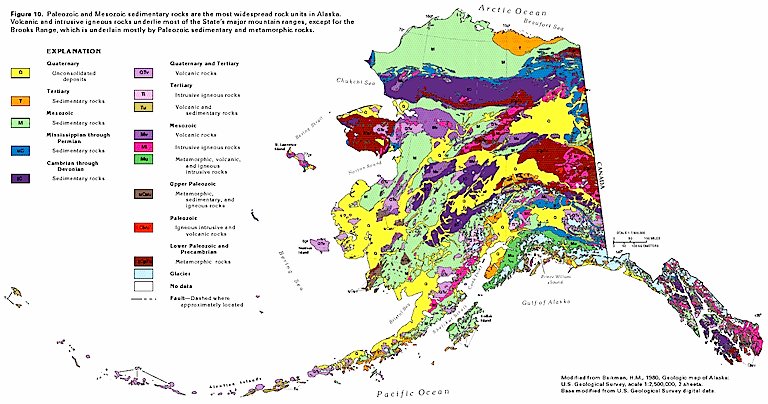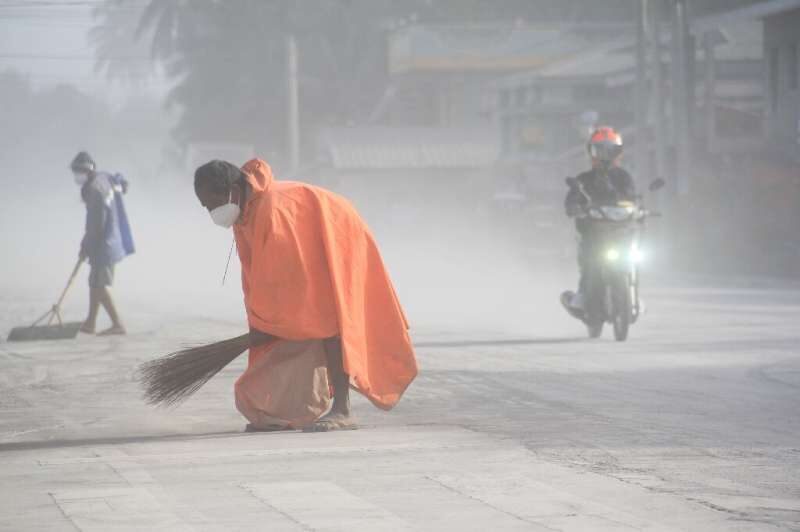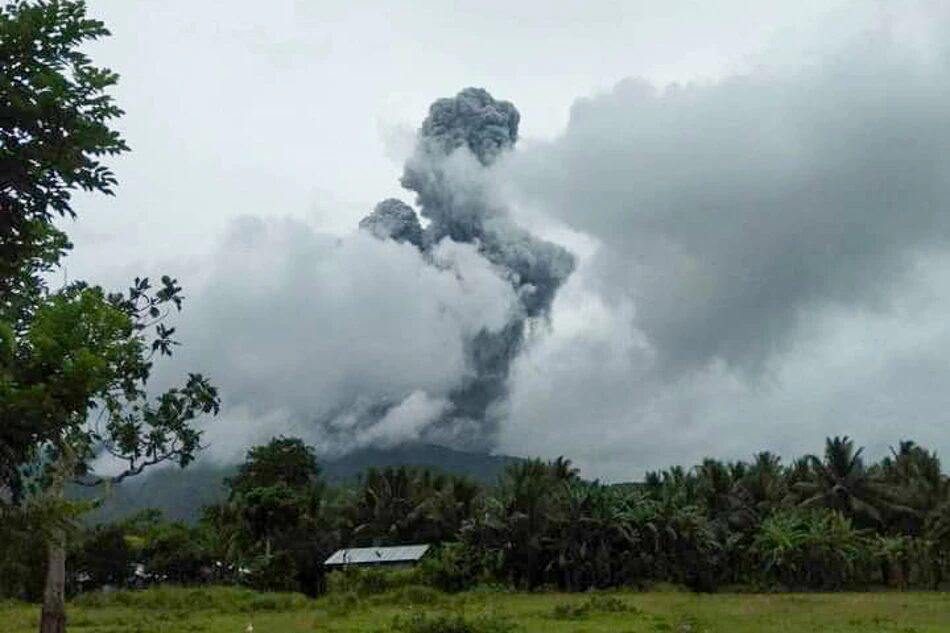
© USGSGeological map of Alaska showing various exotic terranes.
The above
schematic of Alaska reveals regions of rock strata that appear to have "accreted" to an original
craton. Southern Alaska is composed of fragments in all shapes and sizes, each one telling its own tale. They are all "exotic terranes", formed at different places and times. How they were transported to their present location, and why some are rotated with respect to adjoining terranes is a mystery.
Some exotic terranes arrived from regions on the other side of the world, while others are from nearby locations. They are each quite different from one another in their characteristics, representing strata from many so-called "geologic ages". There are deposits from the Quaternary period lying in proximity to those from the Cambrian and Mesozoic periods. Those epochs represent hundreds of millions of years. If the theory of continental movement is correct, then "collisions" between landmasses took place more than a dozen times in Alaska.
However, each terrane is not arranged side-by-side with its neighbor, they are intermixed with each other, as the schematic reveals.Another puzzling aspect to the terrane lithography is that some of it is oceanic crust, while some is continental. Some terranes appear to be from volcanic islands. Others appear to be the remains of continental shelves from South America. Less than one percent of Alaska is thought to be from the "original" North American continent.
In the
Journal of Scientific Exploration, Vol. 14, No. 3, pages 307-352, David Pratt took issue with the theory of tectonic displacement of continental and ocean floor structure. As he wrote: "The classical model of thin lithospheric plates moving over a global
asthenosphere is shown to be implausible."

